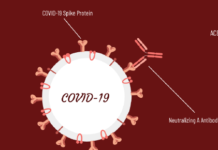Rheumatoid arthritis (RA) runs in my family. In 2011, at the young age of 47, I started to have the telltale signs of warm and tender joint pain in my hands and feet. I knew the devastating effects of RA after watching my older cousin suffer and lose three years of her life to the disease before it went into remission. She was forced into early retirement from teaching, she was immobilized with pain, and her life literally stopped. Something I did not want to happen to me. Was the answer to avoiding this fate in an untested therapy for RA?
RA is a crippling and degenerative disease; the Arthritis Foundation defines it as “a form of inflammatory arthritis and an autoimmune disease.” MedicineNet.com estimates 1.3 million people in the United States suffer from RA.
The body’s immune system attacks its own tissue causing fluid to painfully fill joints. The inflammation can spread all over the body. Currently, doctors do not know what causes it. Rheumatologists suspect genetic and environmental factors and know that women get it three times more often than men, the age of onset is usually 30 to 60, and the onset occurs earlier in women than in men. RA is a chronic condition, potentially crippling, and life-altering.
The answer seemed to come from an expected source. I was enticed by ads that showed happy, active seniors who appear to have found the elixir to aging, the proverbial “Fountain of Youth”, hormone replacement therapy. Touted by companies promising everything from better performance in the bedroom to effortless weight loss—the magic bullet for men and women was testosterone in a hormone replacement therapy. I went to the clinic for weight loss and, instead, I found the therapy stopped the joint pain.
Testosterone, a hormone found in both men and women, regulates a range of functions and body systems from sex drive to skin elasticity to memory. One of the anti-aging properties of testosterone is anti-inflammatory action on painful joints.
I decided to try testosterone pellets implanted every 12 weeks, which are left to dissolve and put the hormone in my body. I had more energy, my skin looked better, I even lost some weight. So, despite the cost of the regime, which was not covered under insurance, it was worth it because I no longer had any RA symptoms.
There is research that supports testosterone as an addition (adjuvant) to other anti-inflammatory medications for RA. Maurizio Cutolo with the Research Laboratory and Division of Rheumatology, Department of Internal Medicine at the University of Genova, Italy, found that male RA patients that using testosterone, along with other anti-inflammatory drugs, was the “most promising therapeutic approach.” I did not question the treatment, the health side effects, or the potential harm it might do. However, my skeptical family urged me to do more research,
Was this safe? Was it a real doctor checking my hormone levels? What were the possible short and long-term side effects? Throughout the time I took the implants, I did not have stiffness in my hands or joints. After about a year, I was having a hard time sleeping, was angrier in my interactions with family, and had more facial hair.
On a routine trip to my primary care doctor, I told them what I was taking. She were shocked and did a blood test. Not only did the lab results contradict the clinic results that my testosterone was low; my blood pressure had gone up. Before making my next visit to the anti-aging clinic, I did some research.
Evidence supporting the use the testosterone in women was almost nonexistent. Currently, there are no FDA approved uses of testosterone for women, according to WebMD. One 2011 study in the The Journal of Clinical Endocrinology & Metabolism noted it may be among the first to look at a study involving women, hormones, and inflammation. Their conclusion simply stated was that a decrease in hormones leads to the body becoming more prone to inflammation. The report made the connection, but did not offer any treatment protocols or even stated if this was something to be used in treatment.
Finding the negative side effects of using testosterone as hormone replacement therapy for women was not difficult. WebMD states that since excess testosterone in women is converted to estrogen. High estrogen levels increase the risk of breast cancer, heart disease, and blood clots. The site does state there are no conclusive studies, since there has not been any long-term research on testosterone on women. Excess testosterone in pre-menopausal women can lead to swings in aggressive behavior, excessive hair growth, and changes in voice levels and in body shape. All symptoms I had experienced. My family has a history of high blood pressure, so I had to ask myself, is the cure worth the potential harmful effects?
I choose to stop taking the testosterone in 2012 after researching and speaking with my primary physician. I learned my RA symptoms can be managed through less destructive means, such as a diet low in nightshade vegetables and switching to organic meats low in steroids and nitrites. Diet, moderate exercise, and stretching help keep my joints limber and flexible, which incidentally also helps with weight management. So far, my symptoms of RA have not come back. Kelly Clark

This work is licensed under a Creative Commons Attribution-NonCommercial-NoDerivs 3.0 Unported License













